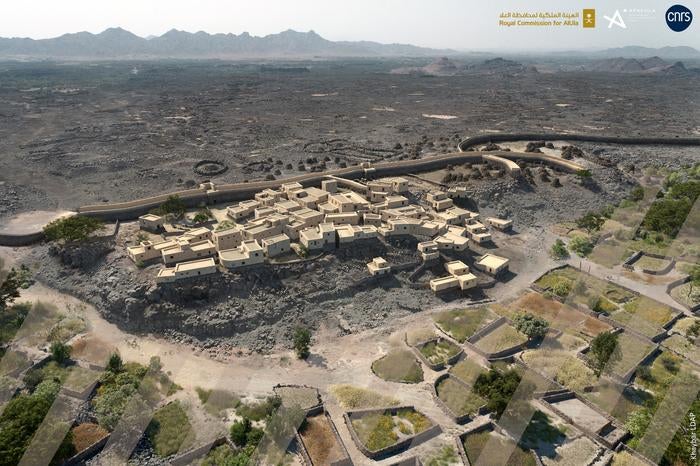Archaeology breakthrough! 4,000-year-old fort city found hidden in Saudi oasis
Northern Arabia was likely dotted with similar small fortified towns, scientists say
Your support helps us to tell the story
From reproductive rights to climate change to Big Tech, The Independent is on the ground when the story is developing. Whether it's investigating the financials of Elon Musk's pro-Trump PAC or producing our latest documentary, 'The A Word', which shines a light on the American women fighting for reproductive rights, we know how important it is to parse out the facts from the messaging.
At such a critical moment in US history, we need reporters on the ground. Your donation allows us to keep sending journalists to speak to both sides of the story.
The Independent is trusted by Americans across the entire political spectrum. And unlike many other quality news outlets, we choose not to lock Americans out of our reporting and analysis with paywalls. We believe quality journalism should be available to everyone, paid for by those who can afford it.
Your support makes all the difference.Archaeologists have uncovered evidence of an ancient Bronze Age town under an oasis in Saudi Arabia’s Madinah province that was slowly occupied from 2400 BC.
Researchers say the ancient town, dubbed al-Natah, was a city transforming from a nomadic cattle-herding lifestyle into a complex urban settlement.
The town’s remains are concealed by the walled oasis of Khaybar, a fertile land surrounded by desert in the northwest of the Arabian Peninsula.
Urbanization has been difficult to study in northern Arabia due to a lack of well-preserved archaeological sites compared to better-understood areas such as the Levant and Mesopotamia.
However, recent digs in northern Arabia provide fresh insights into the early stages of urbanisation in this region.
The ancient al-Natah town with around 500 residents, covered about 1.5ha, and had a central district and nearby residential district surrounded by protective ramparts, according to the study published in the journal PLoS ONE.

Researchers found building foundations at the ancient site that were strong enough to easily support at least one or two-storey homes.
Then about a thousand years later, the city appears to have been abandoned, scientists say.
Researchers also found evidence of a cluster of graves near the town representing an ancient necropolis.
These graves contained metal weapons like axes and daggers as well as stones such as agate, indicating that the ancient society was fairly advanced so long ago.
The burial practices found here indicate there was a degree of social stratification among the ancient Bronze Age population that lived here.
Al-Natah, according to archaeologists, is similar to other sites of comparable ages in northern Arabia.
However, scientists say these sites were smaller and less socio-politically complex than contemporary sites in the Levant and Mesopotamia.
So al-Natah, according to researchers, represents a state of “low urbanization”, and a transitional stage between nomadic pastoralism and complex urban settlements.
“By comparison with neighbouring oasis centres, we suggest that Northwestern Arabia during the Bronze Age, largely dominated by pastoral nomadic groups and already integrated into long-distance trade network,” scientists wrote.
The finding indicates northern Arabia was likely dotted with similar small fortified towns during the Early-Middle Bronze Age when other regions more rapidly urbanised.
These towns, scientists say, may have laid the foundations for the “incense route” by which spices, frankincense and myrrh were traded from southern Arabia to the Mediterranean.
“For the first time in north-western Arabia, a small Bronze Age town (2400-1300 BC) connected to a vast network of ramparts has been discovered by archaeologists, raising questions about the early development of local urbanism,” researchers wrote.

Join our commenting forum
Join thought-provoking conversations, follow other Independent readers and see their replies
Comments